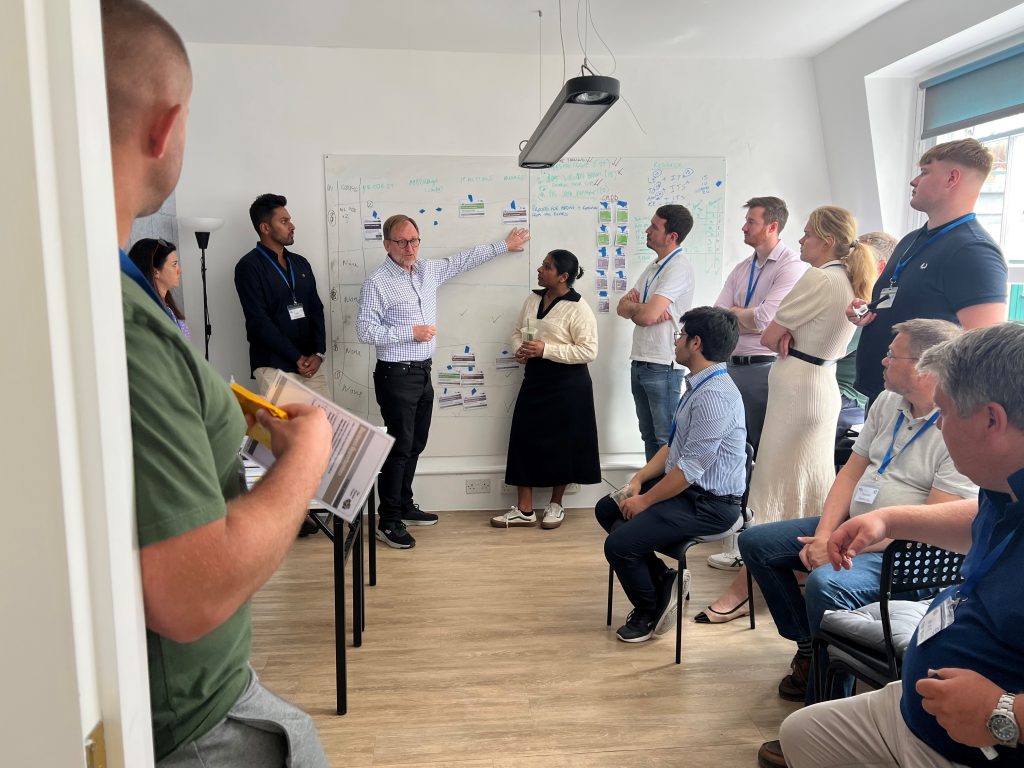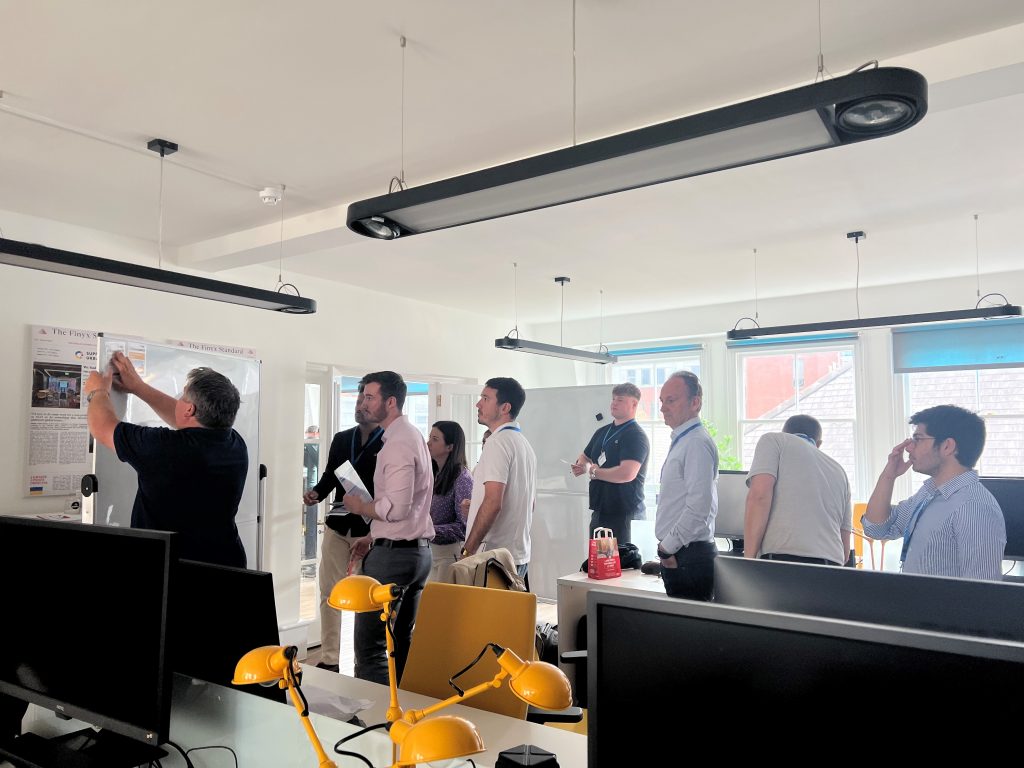The Phoenix Project Simulation
On a Tuesday immediately following the May Bank holiday, 12 of the Finyx team participated in “The Phoenix Project Simulation,” that provides an insight into DevOps, in an accelerated way. With guidance from the facilitators, we ran through real life scenarios of an imaginary business, prioritising and deprioritising work items, whilst improving the flow of work and delivery of value across four structured rounds. There were sad faces after the second round, as we performed worse than in the first but in hindsight, we learnt and surpassed our imaginary revenue targets and share prices (so said the simulation algorithm).

“A challenging and thought provoking DevOps simulation that brough to life many of the challenges organisations face in changing the way teams engage and collaborate,” Chris Naylor
It was a worthwhile day with a few standout lessons learnt across the team, all of which are easily transferred into a real organisation with an IT department (so that’s any, really). My main takeaways have been:
Business and Technology should break out of the silos – they should talk to each other to elicit how important an item is in relation to another and then deliver to those priorities or drop them accordingly. Even better, if colleagues do not just understand their own role but also the roles of the wider business. One of the pivotal points in our simulation was when the Testing Team explained the mechanism, they adhere to in order to ensure the items shipped to customers are of high quality.
Spare capacity is vital – in today’s world “being busy” is often perceived to be a badge of honour, but should it? Maintaining some spare capacity allows to work on those curveballs such a cybersecurity issues or an urgent audit action whilst still delivering to the main defined priorities. The business should aim to minimise waste and not work anything that does not have value associated with it.
Effective priorities visualisation and ways of working – investing time into improving our board and initiatives to increase capacity through training and automation were instrumental for increasing velocity at every sprint (number of completed projects delivered per sprint).
And finally…
Trust your team to do the work you hired them to do – let the team “pull” the work onto their backlog rather than “push” the work on them. Provided the team or a supervisor watch the capacity, they will let you know what they can and cannot do.
I left The Phoenix Project Simulation with greater appreciation for DevOps, and am looking forward to taking the lessons I learnt to our clients.

“I believe the Phoenix Project Simulation is perfect for teams that want to appreciate the unique perspectives and challenges of various IT roles, especially in pressure situations,” Sam Howes, Principal Consultant

